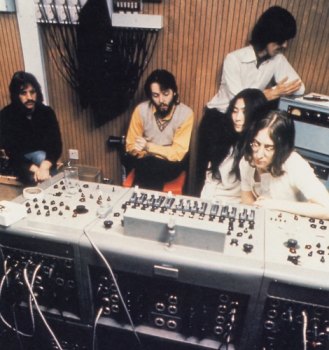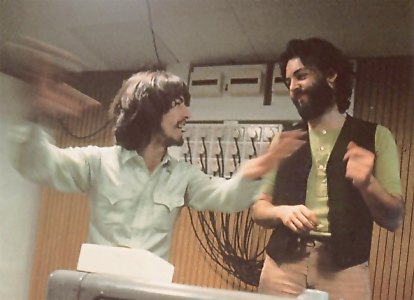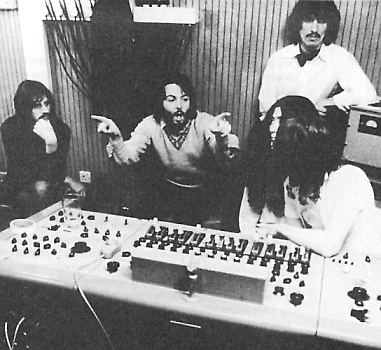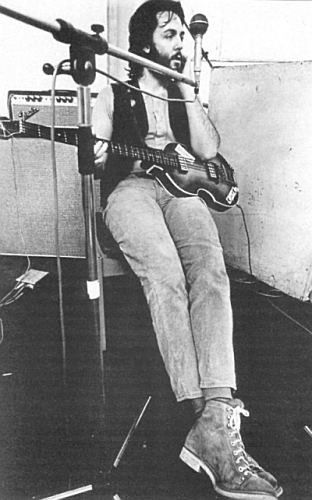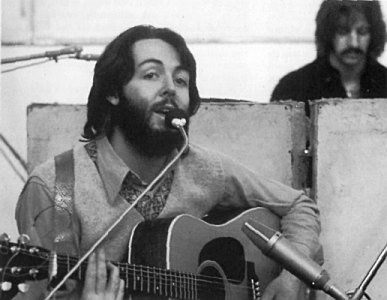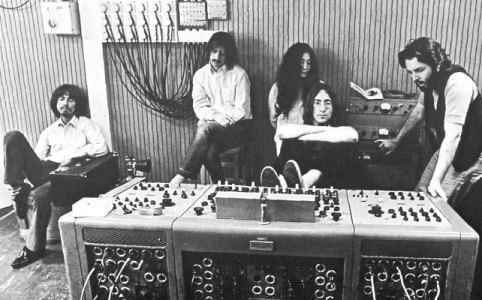The Beatles' version of Teddy
Boy was included on the first of the two unissued Get
Back albums and remains unissued to the time of writing. However the
song was re-recorded alone by Paul and released in April 1970 on his
first solo album McCartney (21 February 1970).
The Beatles recorded two versions of Dig
It, an impromptu number
created by John though released on Let It Be as a
Lennon-McCartney-Starkey-Harrison composition. The first version was
never issued, although John's childlike spoken message at the end of the
recording - "That was 'Can You Dig It' by Georgie Wood, now we'd
like to do 'Hark The Angels Come' " - was tacked onto the end of
the second version of the song (which was substantially abbreviated to
be used on the Get Back and Let It Be albums). Heather Eastman,
six-years-old and six weeks away from becoming Paul's step-daughter,
contributed amusing backing vocals during the early part of the song and
George Martin shook a percussive shaker.
The tapes also rolled for the recording of Untitled
Jamming (a very
brief and entirely instrumental piece), a speedy jam of the 1957 Everly
Brothers hit Bye Bye Love, and of two new songs: Paul's
Let It Be
and George's Blues, which was the working title of
For You Blue.
A long rock and roll medley followed: Shake Rattle And
Roll (Joe Turner, 1954), Kansas
City (Wilbur Harrison, 1959, not at all like the
Little Richard cover which the Beatles recorded for Beatles For
Sale), Miss Ann (Little
Richard, 1956), Lawdy Miss Clawdy
(Lloyd Price,
1952), Blue Suede Shoes (Carl
Perkins, 1956) and You Really Got A
Hold On Me (the Miracles with Smokey Robinson, 1962, as covered on
With
The Beatles). George then led the Beatles into a mostly instrumental
version of the same group's Tracks Of My
Tears (1965 but not a hit
until 1969).

